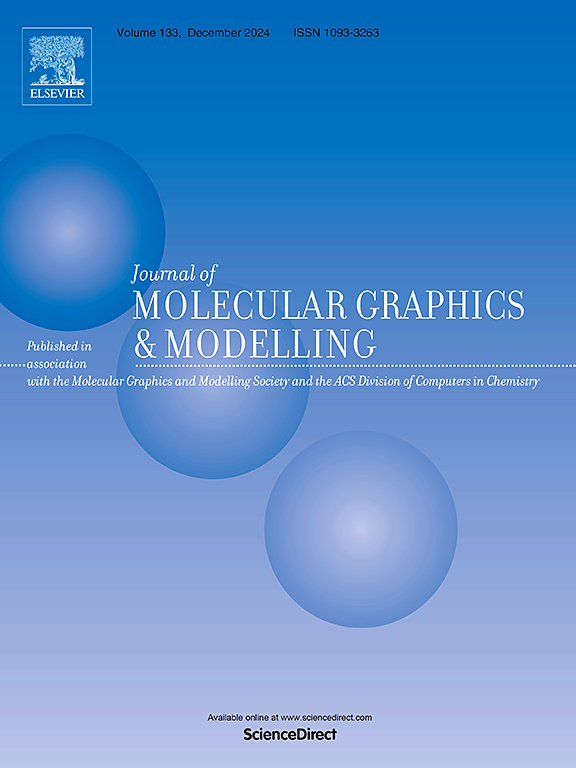Molecular interaction profiling and binding dynamics of Cinnamomum zeylanicum phytochemicals with human pancreatic amylase
IF 2.7
4区 生物学
Q2 BIOCHEMICAL RESEARCH METHODS
引用次数: 0
Abstract
Diabetes mellitus, characterized by persistent hyperglycemia, remains a critical global health challenge. Inhibition of human pancreatic alpha-amylase, a key enzyme catalyzing carbohydrate digestion, is a promising approach to manage postprandial glucose levels. Cinnamomum zeylanicum, a medicinal plant known for its therapeutic potential, harbors bioactive compounds that can act as natural alpha-amylase inhibitors, though their mechanisms remain underexplored. In this study, molecular docking and 200 ns molecular dynamics (MD) simulations were employed to evaluate the inhibitory potential of 18 phytochemicals derived from Cinnamomum zeylanicum. Two lead compounds, 1HE (1,2,4a,5,6,8a-Hexahydro-1-isopropyl-4,7-dimethylnaphthalene) and C4B (cis-4-Benzyl-2,6-diphenyl-tetrahydropyran), exhibited superior binding affinities (−7.91 and −8.78 kcal/mol, respectively) compared to the FDA-approved inhibitors, acarbose (−8.2 kcal/mol) and miglitol (−5.6 kcal/mol). MD simulations confirmed the stability of the complexes, with RMSD values of 0.21 ± 0.02 nm for 1HE and 0.24 ± 0.03 nm for C4B, showing minimal structural deviations. Structural analyses, including radius of gyration (Rg) and solvent-accessible surface area (SASA), revealed stable and compact protein-ligand conformations. Notably, free energy landscape (FEL) analysis indicated that C4B induces multiple metastable states, suggesting a dynamic inhibitory mechanism potentially involving allosteric regulation. These results highlight 1HE and C4B as promising natural inhibitors with favorable stability, binding characteristics, and inhibitory mechanisms. Further in vitro and in vivo studies are warranted to validate their therapeutic potential as safe and effective alternatives for diabetes management.

求助全文
约1分钟内获得全文
求助全文
来源期刊

Journal of molecular graphics & modelling
生物-计算机:跨学科应用
CiteScore
5.50
自引率
6.90%
发文量
216
审稿时长
35 days
期刊介绍:
The Journal of Molecular Graphics and Modelling is devoted to the publication of papers on the uses of computers in theoretical investigations of molecular structure, function, interaction, and design. The scope of the journal includes all aspects of molecular modeling and computational chemistry, including, for instance, the study of molecular shape and properties, molecular simulations, protein and polymer engineering, drug design, materials design, structure-activity and structure-property relationships, database mining, and compound library design.
As a primary research journal, JMGM seeks to bring new knowledge to the attention of our readers. As such, submissions to the journal need to not only report results, but must draw conclusions and explore implications of the work presented. Authors are strongly encouraged to bear this in mind when preparing manuscripts. Routine applications of standard modelling approaches, providing only very limited new scientific insight, will not meet our criteria for publication. Reproducibility of reported calculations is an important issue. Wherever possible, we urge authors to enhance their papers with Supplementary Data, for example, in QSAR studies machine-readable versions of molecular datasets or in the development of new force-field parameters versions of the topology and force field parameter files. Routine applications of existing methods that do not lead to genuinely new insight will not be considered.
 求助内容:
求助内容: 应助结果提醒方式:
应助结果提醒方式:


